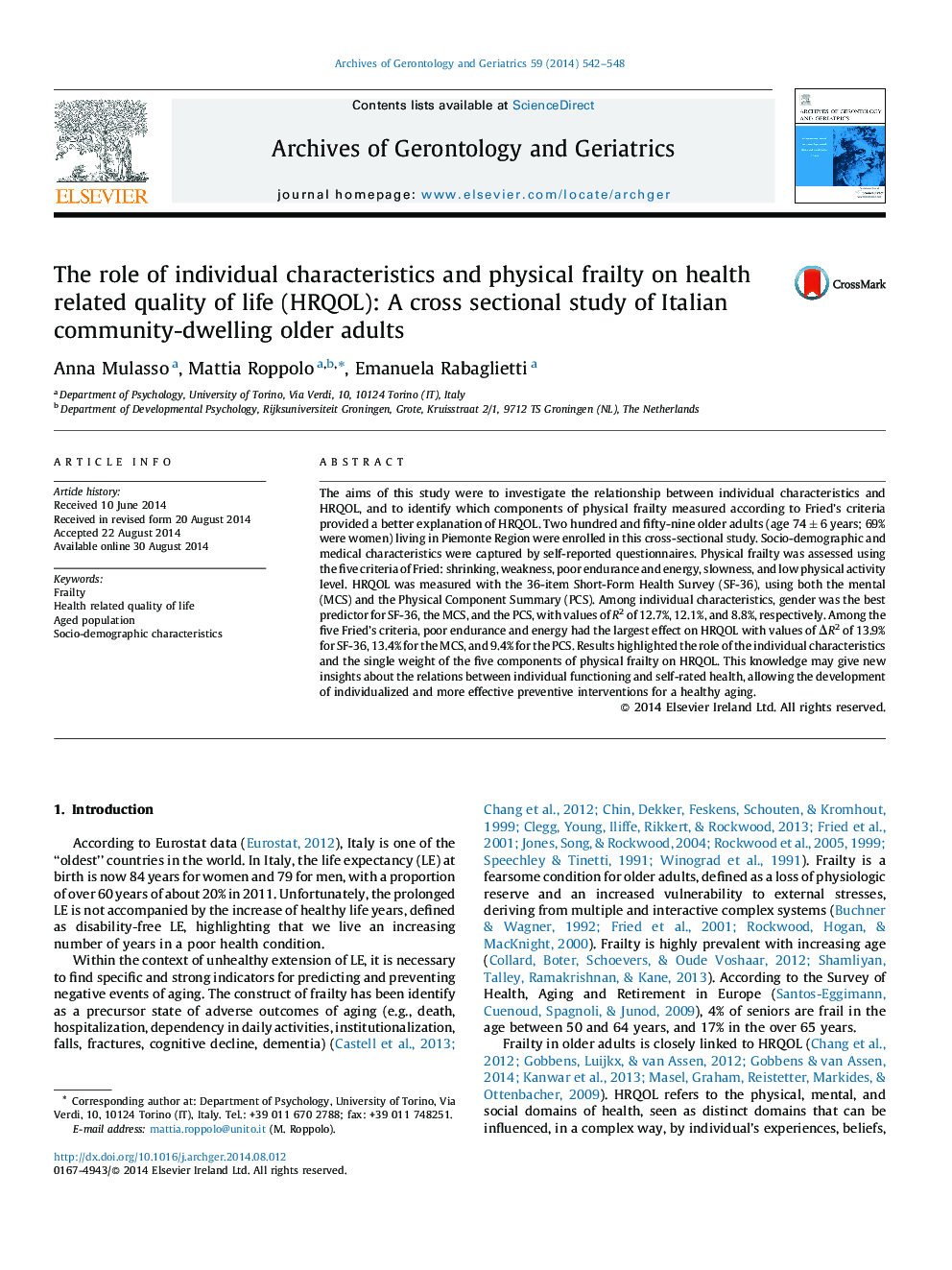| Article ID | Journal | Published Year | Pages | File Type |
|---|---|---|---|---|
| 1902898 | Archives of Gerontology and Geriatrics | 2014 | 7 Pages |
•The study explores the relations among frailty, individual characteristics and HRQOL.•Gender and education are the individual characteristics more related with HRQOL.•The frailty component of poor endurance and energy has the largest effect on HRQOL.
The aims of this study were to investigate the relationship between individual characteristics and HRQOL, and to identify which components of physical frailty measured according to Fried's criteria provided a better explanation of HRQOL. Two hundred and fifty-nine older adults (age 74 ± 6 years; 69% were women) living in Piemonte Region were enrolled in this cross-sectional study. Socio-demographic and medical characteristics were captured by self-reported questionnaires. Physical frailty was assessed using the five criteria of Fried: shrinking, weakness, poor endurance and energy, slowness, and low physical activity level. HRQOL was measured with the 36-item Short-Form Health Survey (SF-36), using both the mental (MCS) and the Physical Component Summary (PCS). Among individual characteristics, gender was the best predictor for SF-36, the MCS, and the PCS, with values of R2 of 12.7%, 12.1%, and 8.8%, respectively. Among the five Fried's criteria, poor endurance and energy had the largest effect on HRQOL with values of ΔR2 of 13.9% for SF-36, 13.4% for the MCS, and 9.4% for the PCS. Results highlighted the role of the individual characteristics and the single weight of the five components of physical frailty on HRQOL. This knowledge may give new insights about the relations between individual functioning and self-rated health, allowing the development of individualized and more effective preventive interventions for a healthy aging.
